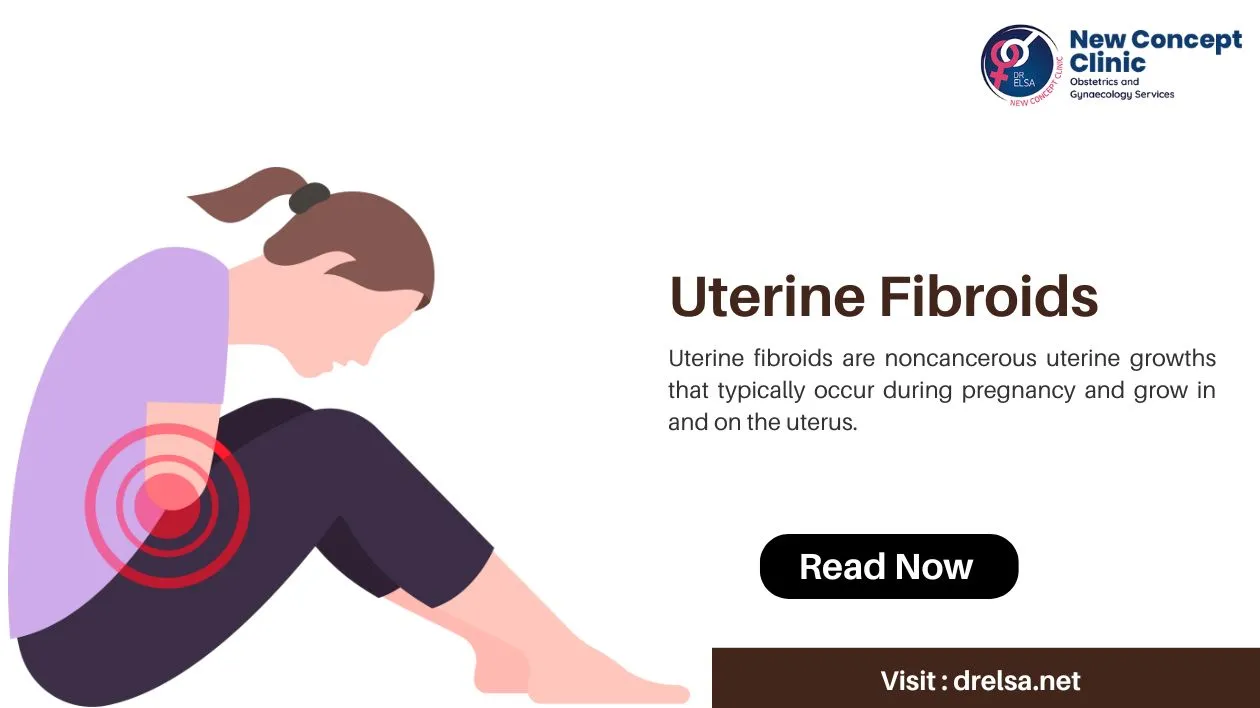

Uterine fibroids are noncancerous uterine growths that typically occur during pregnancy and grow in and on the uterus. The uterus is an upside-down pear-shaped organ located in the pelvis. Your uterus should be approximately the size of a lemon. It's also known as the womb, and it's where a baby develops and grows when pregnant. Uterine fibroids, also known as leiomyomas (lie-o-my-O-muhs) or myomas, are not connected with an increased risk of uterine cancer and seldom progress to cancer.
Uterine fibroids are often discovered by chance during a normal pelvic exam. Your doctor may detect anomalies in the shape of your uterus, which could suggest the presence of fibroids.
Fibroids do not usually produce symptoms, but when they do, they can cause
It produces Heavy menstrual bleeding
It produces Back pain
A feeling of fullness in your lower abdomen/bloating.
It produces Lower back pain
Frequent urination
It produces Sex pain.
It produces Constipation
Increased abdominal distention (enlargement), giving the appearance of a pregnant stomach.
It produces a Vaginal discharge that is persistent.
Small fibroids rarely need treatment, however larger fibroids may require medication or surgery.
Fibroids are usually discovered during a routine examination by a women's health practitioner. They can be discovered and diagnosed via a pelvic exam, gynecologic examination, or prenatal care.
Sonohysterography
Ultrasonography
Hysterosalpingography (HSG)
Magnetic resonance imaging (MRI)
Laparoscopy
Computed tomography (CT)
The treatment of uterine fibroids varies according to their size, amount, and location, as well as the symptoms they cause. Small fibroids rarely need treatment, however larger fibroids may require medication or surgery.
Small fibroids are frequently disregarded. Most women have no symptoms or worries about fibroids at all. Your fibroids will be checked continually over time, but there is no need to take action right now. Depending on the size and symptoms of your fibroid, your doctor may recommend regular pelvic exams and ultrasounds. If you are experiencing fibroids-related symptoms such as anemia from heavy bleeding, moderate to severe pain, infertility troubles, or urinary tract and bowel problems, you should seek treatment.
Your long-term fertility objectives will also influence the best treatment option for you. Some treatment options may not be appropriate if you plan to have children in the future. When deciding on a treatment plan, discuss your fertility concerns and long-term goals with your doctor.
Over-the-counter (OTC) pain medications
Iron supplements
Oral therapies
Gonadotropin-releasing hormone (GnRH) agonists
Birth control
When addressing the many types of fibroid removal operations, there are several factors to consider. Not only can the size, location, and number of fibroids determine the type of surgery performed, but your future pregnancy plans can also influence the treatment approach. Some surgical techniques preserve the uterus and allow you to conceive in the future, while others damage or remove it.
Myomectomy is a procedure that allows your doctor to remove fibroids from your uterus without damaging it. Myomectomy can take a variety of forms. The type of operation that is best for you will be determined by the location, size, and number of fibroids you have. The following are instances. There are several examples of myomectomy procedures for removing fibroids
Hysteroscopy
Hysteroscopy is the procedure of introducing a narrow, flexible tube-like device (scope) into the uterus via the vagina and cervix. This surgery involves no incisions. The scope will be used to remove the fibroids during the procedure. The fibroids will then be removed by your doctor.
Laparoscopy
During the procedure, your provider will remove the fibroids using a scope. Unlike hysteroscopy, this procedure needs a few tiny abdominal incisions. The scope will enter and remain in your body in this manner. This procedure can also be performed with a robot.
Laparotomy
During a laparotomy, an incision is made in your belly, and the fibroids are removed using this single larger cut.
If pregnancy is wanted, these therapies are not recommended, and the uterus can be removed surgically. These treatments can be highly effective, but they virtually always result in the cessation of further births. Surgical techniques for removing fibroids include:
Hysterectomy procedure:
A hysterectomy is a treatment that removes your uterus. Fibroids can only be addressed via a hysterectomy. When your uterus is completely removed, the fibroids will not return, and your symptoms should resolve. If your uterus is removed after a hysterectomy but your ovaries remain, you will not go through menopause. If you have large fibroids or are experiencing heavy bleeding from them, this procedure may be recommended. When hysteroscopy is recommended, select the least invasive treatment possible. Minimally invasive techniques include vaginal, laparoscopic, and robotic surgery.
Uterine Fibroid Embolization
An interventional radiologist works with your gynecologist to perform uterine fibroid embolization. Using a short catheter inserted into the uterine artery or radial artery, tiny particles are used to block the flow of blood from the uterus to the fibroids. The decrease of blood flow causes the fibroids to shrink, which alleviates your problems.
Radiofrequency ablation (RFA)
Radiofrequency ablation (RFA) is a safe and successful procedure for symptomatic uterine fibroids that can be performed laparoscopically, transvaginally, or transcervically.
These some of the risk factors can increase chances of acquiring fibroids. These include:
Obesity and a higher body weight
Fibroids in Family History
Menstruation that begins early
Menopause occurs later in life.
Not being able to have children.